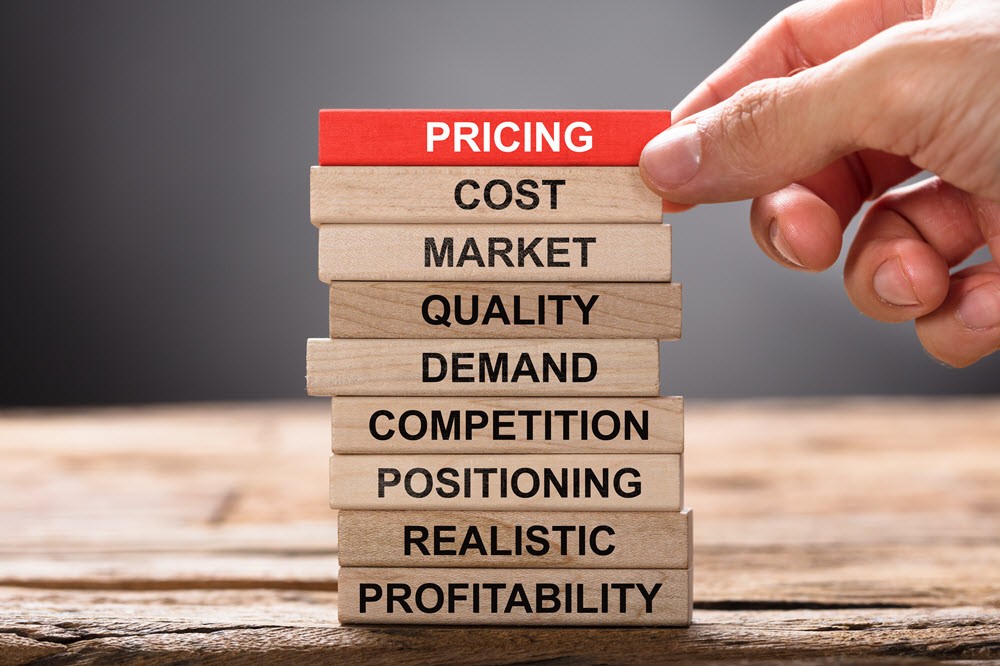
E-commerce Pricing Strategies for Competitive Advantage
In the fiercely competitive world of e-commerce, pricing strategies play a pivotal role in achieving a competitive advantage. To stand out in the crowd and entice customers, businesses must navigate the delicate balance between profitability and affordability. In this comprehensive guide, we will explore various pricing strategies that can give your e-commerce venture a winning edge. So, join us on this journey of pricing mastery, where we delve into the intricacies of E-commerce Pricing Strategies for Competitive Advantage.
The Foundation: Competitive Advantage in E-commerce
Understanding Competitive Advantage
In the ever-evolving landscape of e-commerce, competitive advantage is the Holy Grail. But what is it? How can you define and harness it? We'll demystify the concept of competitive advantage and how pricing strategies fit into the equation.
Why E-commerce Pricing Matters
Effective pricing can be a game-changer. Discover the profound impact pricing strategies can have on your e-commerce venture's profitability, growth, and sustainability.
Crafting Your Pricing Strategy
Dynamic Pricing
Dynamic pricing, the art of adjusting prices in real-time, allows you to adapt to market fluctuations and customer behaviors. Uncover how this strategy can give you an edge in the competitive e-commerce arena.
Value-Based Pricing
This strategy revolves around the perceived value of your products. Learn how to leverage customer perceptions to set prices that reflect the true worth of your offerings.
Cost-Plus Pricing
Cost-plus pricing is a straightforward approach, but it can be powerful. Understand how to calculate your costs accurately and set a competitive margin that keeps your business healthy.
Psychological Pricing
Explore the fascinating world of psychological pricing, where pricing is designed to tap into the consumer psyche. Discover how this strategy can influence buying decisions.
The Art of Discounts and Promotions
Discounts and Promotions: A Double-Edged Sword
Discounts and promotions can be potent weapons in your arsenal. Learn how to wield them effectively without sacrificing your profit margins.
Flash Sales and Limited-Time Offers
Creating a sense of urgency can boost sales. Unearth the secrets of running flash sales and limited-time offers for maximum impact.
Loyalty Programs
Loyalty programs can turn occasional buyers into loyal customers. Explore how to structure enticing programs that encourage repeat business.
Staying Competitive: Competitive Analysis
To stay ahead, you must know your competitors. Learn how to conduct a competitive analysis to inform your pricing strategy and outshine your rivals.
Customer-Centric Approach
The Price-Quality Connection
Customers often associate price with quality. Find out how to use this perception to your advantage and enhance your brand's image.
Personalized Pricing
Tailoring prices to individual customers can create a sense of exclusivity. Discover how to implement personalized pricing effectively.
The world of E-commerce Pricing Strategies for Competitive Advantage is vast and diverse. As you embark on your journey to master these strategies, remember that flexibility, adaptability, and continuous improvement are your best allies.
Summary: E-commerce pricing is not merely about numbers; it's a strategic game where the right moves can set you apart from the competition. In this guide, we've explored various pricing strategies, from dynamic pricing to personalized approaches, to help you gain a competitive advantage in the e-commerce realm.
Frequently Asked Questions
-
What is the role of competitive advantage in e-commerce pricing?
Competitive advantage in e-commerce pricing is the ability to offer better value or services than your competitors at the same or lower cost, which can lead to increased market share and profitability. -
How can dynamic pricing benefit e-commerce businesses?
Dynamic pricing allows e-commerce businesses to adjust prices based on real-time data, optimizing profits and staying competitive in a constantly changing market. -
What is the significance of psychological pricing in e-commerce?
Psychological pricing can influence consumer perception and decision-making, making it a valuable strategy for e-commerce businesses to increase sales. -
How can loyalty programs help e-commerce businesses stand out?
Loyalty programs can foster customer retention, increasing customer lifetime value and setting e-commerce businesses apart from competitors. -
Why is personalized pricing important in e-commerce?
Personalized pricing tailors offers to individual customers, fostering a sense of exclusivity and enhancing customer loyalty. -
What steps are involved in conducting a competitive analysis for e-commerce pricing?
Conducting a competitive analysis involves identifying key competitors, analyzing their pricing strategies, and using the insights to refine your own pricing approach.
